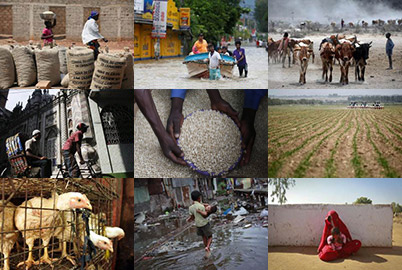Health minister says this is India's first recorded instance of the rare, deadly virus
AHMEDABAD (AlertNet) - Health authorities in western Indian have begun screening thousands of villagers after a rare, deadly virus known as Crimean-Congo haemorrhagic fever (CCHF) killed three people, officials said on Thursday.
The disease, also known as "Congo fever", is believed to have caused the deaths of a 30-year-old woman, and the doctor and nurse who were treating her in a hospital in Ahmedabad city, the capital of India's Gujarat state.
Over 16,000 people are now being screened for symptoms of the deadly disease by 20 teams of health experts who have been deployed to the infected woman's home village of Kolat, 30 km southwest of Ahmedabad.
Two relatives of the women - her husband and her brother - have so far been found to have similar symptoms and have been hospitalised.
"This is the first recorded instance of CCHF in India. There might have been sporadic cases which may have gone unnoticed," said Gujarat's Health Minister Jay Narayan Vyas.
"The health department is well-equipped to deal with the situation as there was enough stock of anti-viral ribavirin which is used to treat affected persons."
Officials say workers are also spraying disinfectant around the village, and are collecting blood samples and ticks from cattle in Kolat.
CCHF is a viral haemorrhagic fever transmitted by ticks from a range of livestock and domestic animals. It is found in Eastern Europe as well as parts of central Asia, Africa, the Middle East and southern Europe.
Transmission to humans occurs through contact with infected animal blood or ticks. CCHF can be transmitted from one infected human to another by contact with infectious blood or body fluids.
Symptoms include high fever, vomiting and abdominal pain but as the illness progresses, large areas of severe bruising and severe nosebleeds are also common.
"The mortality rate from CCHF is approximately 30 percent, with death occurring in the second week of the illness," says a World Health Organisation fact sheet on the disease.
CCHF first appeared in the Crimea in 1944, and was later identified as the cause of haemorrhagic fever cases in Democratic Republic of Congo.
(Writing by Nita Bhalla)
Our Standards: The Thomson Reuters Trust Principles.

